I have a code example using matplotlib.pyplot.plot() that works and that that I want to replicate to make hatched bar segments on a stacked bar chart. However, I have been making all of my other graphics using pandas.DataFrame.plot() instead of matplotlib.pyplot.plot() and would like to continue this here as well. The example code returns a tuple of BarContainer objects and pandas.DataFrame.plot() returns an AxisSubplot obect, and I don't know how to navigate between the two.
Any suggestions for how to get BarContainer objects out of pandas.DataFrame.plot() so that I can use those to replicate the example?
If not, any suggestions for how to achieve my aim of adding hatching per colored bar segment on a stacked bar chart using pandas.DataFrame.plot()?
With my data, the hatching will be useful to help differentiate between similar colors since I have both a lot of categories and items and the results otherwise can look visually similar. (I know I could also find a way to plot simpler things, but doing this helpful for my exploratory data analysis.) Thank you!
Example working code to hatch each colored bar segment of a stacked bar chart (from here: https://matplotlib.org/examples/pylab_examples/hatch_demo.html ):
import pandas as pd
import numpy as np
import matplotlib.pyplot as plt
fig = plt.figure()
ax2 = fig.add_subplot(111)
bars = ax2.bar(range(1, 5), range(1, 5), color='yellow', ecolor='black') + \
ax2.bar(range(1, 5), [6] * 4, bottom=range(1, 5), color='green', ecolor='black')
patterns = ('-', '+', 'x', '\\', '*', 'o', 'O', '.')
for bar, pattern in zip(bars, patterns):
bar.set_hatch(pattern)
My code (with simplified data) that I wish had hatches per colored bar segments:
df = pd.DataFrame(np.random.uniform(0,10, size=(5,26)))
df.columns=['a','b','c','d','e','f','g','h','i','j','k','l','m','n','o','p','q','r','s','t','u','v','w','x','y','z']
ax = df.plot.barh(stacked=True, width=0.98, figsize=(10,5), cmap='gist_ncar')

